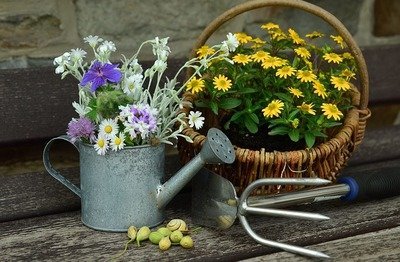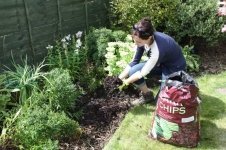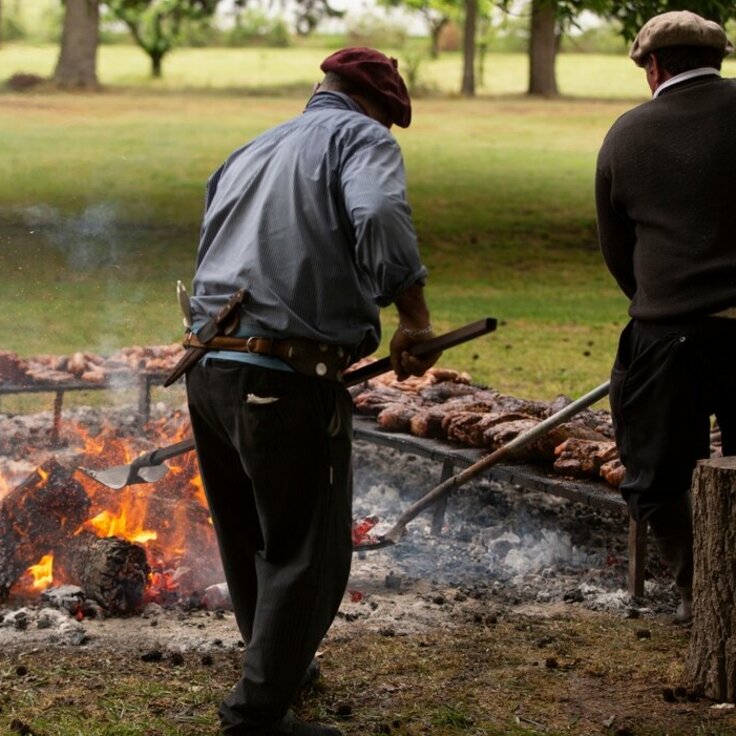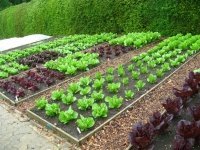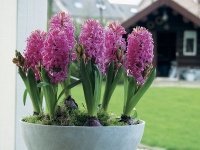Hanging baskets
With summer fast approaching, get your hanging baskets filled says Kris
May is a funny time of year in the garden. Sunshine early in the month sends often sends us on a summer bedding planting frenzy, then a week later , things take a turn for the worse and we’re rushing out again to cover and protect our tender summer bedding plants.
Because of these fluctuations I leave beds and borders for later in the month and start out with my hanging baskets, which are more easily covered if needs be, or even moved back under cover, with no disturbance to the plants.
If you don’t have a covered growing area don’t be put of planting up hanging baskets, just have some fleece protection ready to drape over new baskets if frost looks likely.
I’m using a range of basket styles this year – wire types felt lining, wire types with moss lining, and wicker baskets – rounded and pointed at the base, with plastic lining. I’m planting a few with strawberries as I don’t have space for them on the veg patch,but most will be filled with a range of summer bedding varieties. I never dictate on what plants to use in baskets – with such a wide range of plants now at the garden centres and DIY stores, half the fun is choosing your own mixes and seeing how they turn out. If you think you’ve got a winning planting formula for baskets, do take some pictures and send them in to me (address on letters page)
Remember, a well planted and well cared for basket provide should provide colour all summer long and well in to autumn. Read on for planting tips and care advice through the season.
Compost
Most general composts will do the job for a hanging basket, but there are several specialist tub and basket composts available. These contain wetting agents for easier and more efficient watering and also have a high level of fertiliser to help promote strong growth and flowering.
Feeding and watering
Think about the number of plants you’ll be cramming into a relatively small amount of compost. They won’t make it through the season without a bit of feeding. To set plants off to a good start add slow release granular fertiliser. Down the line if plants seem to be suffering start to apply a liquid feed every two weeks or so to get them through to autumn. Such a small amount of compost will also dry out quickly in the raise, exposed conditions of a hanging basket. Reduce the chances of this by adding water retaining gel – one teaspoon should be enough for a 12in (30cm) basket. Water daily, either early in the day or in the evening until water is running from the bottom of the basket. During very hot spells it may be necessary to water both morning and evening.
Quick tip
Place a pot saucer on top of the lining before filling with compost to hep keep moist
Step by step
Petunia basket with fuchsia centre and lobelia side planting
Step 1
Line your basket and half fill with compost. Add slow release fertiliser and water retaining gel granules and mix well. If there are no planting holes, cut slits for side plants
Step2
Insert side plants roots first from the outside of the basket. Wrapping rootballs in strips of plastic will make them easier to push through the planting holes, with little risk of damaging the the plants
Step 3
Cover the exposed rootballs with compost and space out the top plants (aim to have the top of their rootballs one inch (2.5cm) below the basket rim). PLAce the fuchsia in the centre and 5 or 6 petunias around it.
Step 4
Fill in gaps around the roots with compost and tap down the basket to settle things in. Water well. Hang in a warm sheltered spot in the garden, keeping an eye on forecasts. Cover or bring back under cover if frost is likely.

